
Recent Blog Posts
April 12, 2013
Upcoming Workshop Details
I’m excited to announce that I’ll be presenting a two-day intensive workshop on optimizing body composition next month in Windsor, Ontario, Canada. I’ll be sharing cutting-edge info and strategies, including the most up-t0-date research on all facets of exercise and nutrition. Topics include:
- fat loss strategies
- nutrient timing
- maximizing muscle development
- hands on exercise coaching
This will be a small group workshop limited to 20 people and is eligible for CECs. The format will allow for highly individualized attention, with extensive question and answer sessions integrated into each seminar. The early bird registration has been extended to April 24th. You can check out the details at the link below. Hope to see you in Windsor!
Optimizing Body Composition Workshop
April 7, 2013
Does Adding Aerobic Exercise to Resistance Training Increase Muscle Growth?
A number of readers have asked my opinion on the recent study by Lundberg et al. (2013), which showed that adding cardio to a resistance training routine actually increased muscle growth. I actually wrote a critique of this study several months ago for Alan Aragon’s Research Review. Alan was kind enough to grant me permission to reprint the critique on my blog. So without further ado, here’s what we can take away from the study by Lundberg et al.:
Background Info
A large body of research indicates that combining aerobic training with resistance training (i.e. concurrent training) has a negative effect on gains in muscular strength and size (9). There is evidence that aerobic exercise mediates catabolic pathways while anaerobic exercise mediates anabolic pathways. This has led to the “AMPK-PKB switch” hypothesis, which professes that the two types of exercise are incompatible (2). It has been shown, however, that considerable overlap exists in signaling responses to mechanical stimuli, calling into question the validity of this hypothesis (5).
Recently, Lundberg et al. (6) found that acute anabolic signaling markers (mTOR and p70S6K) were actually greater with concurrent training compared to resistance exercise alone. This seemingly contradicts the majority of previous research, and raises the possibility that aerobic exercise may in fact be beneficial to muscle hypertrophy. However, such results must be taken with caution as the response of translational signaling components to an acute exercise bout are often unrelated to the degree of myofiber hypertrophy seen after long-term resistance training (1). Hence, the current study was conducted by the same lab as a follow-up to this previous work, with the objective of assessing the chronic impact of concurrent training on muscular hypertrophy, strength, power, and endurance.
Study Specifics
Subjects were 10 “moderately trained” college students. The study employed a within-subject design, where participants performed resistance training on one leg while performing concurrent training (both aerobic and resistance exercise) on the other leg. The limb chosen to receive concurrent exercise was counterbalanced between subjects, meaning that for every subject who performed concurrent training on the right leg another would perform the condition on the left leg. This type of design has the inherent advantage of negating any inter-individual differences in response to training, thereby improving statistical power. Thus, the low sample size was not as big an issue as it would have been had the researchers evaluated two independent groups (although the study was still likely underpowered nevertheless).
The training program was carried out over the course of 5 weeks. Aerobic training consisted of 40 minutes of one-legged cycle ergometer exercise per session at 70 percent of peak power output. Immediately following each 40 minute aerobic bout, the workload was bumped up to near maximum peak power and subjects continued pedaling until failure (which occurred, on average, after approximately 2 minutes 30 seconds). Aerobic sessions were performed 3 non-consecutive days a week. Resistance exercise comprised 4 sets of 7 reps of unilateral leg extensions with 2 minutes rest between sets. Resistance sessions were performed 6 hours after the aerobic bout and took place 2-3 days a week (2 days/week in weeks 1, 3, and 5; 3 days/week in weeks 2 and 4). Maximal strength was assessed via isokinetic dynamometry; peak muscle torque, power, and endurance were assessed by flywheel ergometry; muscle hypertrophy was assessed by MRI as well as muscle biopsy.
The study produced some interesting findings. To no one’s surprise, the concurrent training leg showed a strong trend for greater muscular endurance as determined by time to exhaustion. Aerobic exercise requires local endurance and it therefore stands to reason that consistent cycle ergometry training would mediate specific adaptations to enhance this variable. Somewhat surprisingly, measures of strength and power were not different between conditions. Given that a preponderance of evidence seems to indicate that concurrent training interferes with strength-related gains (9), one might have assumed that the resistance-only leg would have shown greater improvements in strength/power. The most surprising finding was that muscle volume and cross sectional area in the concurrent leg was almost double that of the resistance-only leg (13.6% vs. 7.8%, respectively)! Muscle biopsy indicated that these results were primarily attributable to increases in type I fiber hypertrophy. This led researchers to conclude that aerobic exercise may provide synergistic hypertrophic benefits when incorporated into a resistance training routine without compromising functional gains attained from resistance exercise.
A Critical Analysis of Results
So what to make of these results? Should aerobic exercise be included as part of any hypertrophy protocol? Let’s dig a little deeper and see what can be ascertained from a practical standpoint…
The first thing to evaluate in any scientific study is its theoretical rationale; in other words, does the data make sense? In this case, we need to consider why hypertrophic adaptations take place in muscle tissue. The principle of specificity dictates that adaptations are specific to the stimulus applied. With respect to hypertrophy, muscles grow larger in an effort to respond to strength-related challenges. When an overload stimulus is repeatedly imposed on a muscle (such as during resistance training), it will synthesize proteins in order to meet this challenge in the future. By its very nature, aerobic exercise does not challenge the muscle in a strength-related manner, so there would be little reason for the muscle to respond by hypertrophying. In fact, hypertrophy is detrimental to lengthy aerobic-endurance exercise as it requires the body to continually support a greater load during performance. So although we should not dismiss the results of the study outright, we nevertheless must be skeptical as to their validity.
A couple of things stand out upon close scrutiny of the findings. For one, subjects were classified as “moderately trained.” By the authors’ definition, this meant that participants were involved in recreational activities such as skiing and team sports, but had not performed resistance training in the past year. So in essence, the subjects were actually untrained from a resistance training standpoint. Why is this an issue? Well, in those without training experience, virtually any stimulus will be a challenge to the musculature and thus cause hypertrophy. On the other hand, well-trained subjects have already adapted to lower-level stresses, and it therefore remains questionable whether aerobic training would provide enough of a stimulus for further muscular adaptation. It stands to reason that it would not.
Another interesting finding was that while muscle hypertrophy was deemed to be substantially greater in the concurrent leg compared to the resistance-only leg, muscle strength and power was not different between the two conditions. This seems to defy logic. Studies show a direct correlation between muscle strength and muscle CSA: a greater cross sectional area is strongly associated with greater strength (4). The fact that a greater increase in muscle mass did not lead to greater strength therefore sends up a red flag. It would seem that this contradiction is due, at least in part, to the fact that hypertrophic differences were primarily attributed to type I fiber growth. Type I fibers are endurance-related fibers with a limited force-producing capacity; it’s the type II fibers that are primarily responsible for strength and power, and these fibers showed no significant difference between groups. It seems reasonable to question whether such type I fiber hypertrophy is sustainable over the long-term. Since these fibers are highly fatigue-resistant, it could be speculated that they’d be increasingly stubborn to continued growth after an initial period of conditioning. This theory remains to be elucidated.
It also should be noted that MRI signal intensity was markedly increased with concurrent exercise but not with resistance exercise. The significance here is that an increased MRI signal intensity is consistent with an increase in tissue water content. This suggests that the greater muscle volume seen with combined aerobic and resistance exercise may well have been related to intramuscular fluid accumulation, presumably mediated by edema pursuant to muscle damage. The researchers tried to minimize this possibility by obtaining MRI scans 48 hours after completion of the final exercise session. However, peak swelling has been shown to occur approximately 5 days post-exercise (3), raising serious questions as to whether edema in fact played a role in results. The researchers downplayed any potential confounding effects from muscle damage by stating that no subject reported any soreness at the time of testing. But studies show that DOMS is not necessarily well correlated to various markers of muscle damage including maximal isometric strength, ROM, upper arm circumference, and plasma CK levels (7), making it a poor gauge of both the presence and magnitude of tissue trauma. Taking all factors into account, it appears likely that a good portion of the hypertrophic differences between conditions were related to sarcoplasmic elements rather than an increase in contractile muscle proteins.
A major limitation of the study was its short duration. One of the biggest detriments of concurrent training with respect to strength and hypertrophy is that hastens the onset of overtraining syndrome (OS). OS causes the body to shift into a catabolic state, leading to decrements in performance and impaired muscular adaptations (8). The chronic interference hypothesis suggests that the addition of aerobic exercise to a resistance training program results in long-term competing adaptations that ultimately brings about OS and thus interferes with strength-related muscular adaptations (9). Thing is, the effects of OS take time to manifest–certainly more than the five week time-course of this study. Moreover, the volume and frequency of the resistance routine employed was not very demanding, to say the least. 4 sets of knee extensions performed 2-3 days a week is no way representative of the type of routine used by most serious lifters. A higher volume routine, similar to what is customarily employed in a hypertrophy-oriented program, would place greater demands on recuperative abilities and thereby increase the potential for overtraining when combined with frequent aerobic exercise. All things considered, it is impossible to extrapolate the results of this study to long-term, higher volume training programs.
Another limitation is that the study is that a single type of aerobic exercise (cycling) was evaluated for a single muscle group (quadriceps). We cannot conclude that other forms of aerobic exercise (i.e. jogging, treadmill, stepmill, stairmaster, elliptical training, etc) provide the same effects for the quadriceps, nor can we conclude that the same effects will occur in the other lower body muscles, such as the glutes, hamstrings, or calves. In fact, evidence shows that running interferes with strength-related gains to a greater extent than cycling (9). Finally, we cannot conclude that the upper body muscles would respond similarly to upper body aerobics such as swimming or arm ergometry.
In conclusion, this study provided interesting data that challenges existing beliefs with respect to concurrent training. However, the inherent limitations of the study make it far too premature to draw any definitive conclusions on the topic. Future research should seek to examine the chronic effects of concurrent training on muscular hypertrophy over longer time periods and employing routines consistent with what lifters actually perform in real-world situations.
References
1. Adams G, Bamman MM. Characterization and regulation of mechanical loading-induced compensatory muscle hypertrophy. Comprehensive Physiology. 2012; 2829(2970).
2. Atherton PJ, Babraj J, Smith K, Singh J, Rennie MJ, Wackerhage H. Selective activation of AMPK-PGC-1alpha or PKB-TSC2-mTOR signaling can explain specific adaptive responses to endurance or resistance training-like electrical muscle stimulation. FASEB J. 2005; 19(7):786-8.
3. Clarkson PM, Nosaka K, Braun B. Muscle function after exercise-induced muscle damage and rapid adaptation. Med Sci Sports Exerc. 1992; 24(5):512-20.
4. Frontera WR, Hughes VA, Fielding RA, Fiatarone MA, Evans WJ, Roubenoff R. Aging of skeletal muscle: a 12-yr longitudinal study. J Appl Physiol. 2000; 88(4):1321-6.
5. Gibala M. Molecular responses to high-intensity interval exercise. Appl Physiol Nutr Metab. 2009; 34(3):428-32.
6. Lundberg TR, Fernandez-Gonzalo R, Gustafsson T, Tesch PA. Aerobic exercise alters skeletal muscle molecular responses to resistance exercise. Med Sci Sports Exerc. 2012; 44(9):1680-8.
7. Nosaka K, Newton M, Sacco P. Delayed-onset muscle soreness does not reflect the magnitude of eccentric exercise-induced muscle damage. Scand J Med Sci Sports. 2002; 12(6):337-46.
8. Schoenfeld BJ. The mechanisms of muscle hypertrophy and their application to resistance training. J Strength Cond Res. 2010; 24(10):2857-72.
9. Wilson JM, Marin PJ, Rhea MR, Wilson SM, Loenneke JP, Anderson JC. Concurrent training: a meta-analysis examining interference of aerobic and resistance exercises. J Strength Cond Res. 2012; 26(8):2293-307.
October 6, 2012
This and that…
Lots to talk about and share. So without further ado…
An Interview With Brad Schoenfeld – The Hypertrophy Specialist
And here is an interview I did with fitness marketing guru Jon Goodman. This one is a bit lighter than the interview I did with Bret, but there’s a lot of good take-away training info, nonetheless.
Max Muscle: A periodized approach to optimizing muscle hypertrophy
The second is a three-hour hypertrophy seminar that will explore the mechanisms of muscle growth, their application to training, and how to put this information into practice with respect to program design. The seminar is being hosted by Innovative Wellness Consulting and will be held at the American Academy of Personal Training, 138 West 14th Street, NYC on Friday, November 16. Here is a link for registration:
embedded by Embedded Video
.youtube.com/watch?v=CS9X0-GUJS4&feature=plcp
July 23, 2012
Strategies to Maximize Muscle Strength and Size
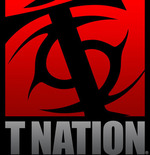
Here is a link to a recent article I wrote for T-Nation titled, Demolish Your Genetic Limits. The article details 5 strategies that I’ve successfully used to help experienced lifters enhance muscle strength and size, all backed by solid research. They’re particularly effective for those who have hit a plateau in their training efforts. Enjoy!
Brad
June 21, 2012
Where are the posts?
Yes, I know I need to be more diligent with posting to the blog! Sorry to those who have emailed me about the lack of activity. Thoughtful posts require a lot of time and and I don’t want to just dash off something for the sake of putting out content. I hope to increase the frequency of posts as the summer wears on and my schedule clears a bit.
In the meantime, I wanted to remind everyone that the NSCA National Conference, taking place in Providence, RI, is less than a month away! I’ll be giving two lectures at the event. First, a 2-hour precon on Wednesday, July 11th titled “Scientific Muscle: A Periodized Approach to Maximizing Muscle Development.” If you want to maximize your muscle development or want to learn how to program routines to help others do so, this is one you don’t want to miss as I’ll delve deep into the how science can be blended with art to customize a routine for optimal growth. In addition, ’ll be doing a general session on Friday, July 13th titled “Metabolic Resistance Training.” This lecture focuses on how to structure your lifting routine to optimize fat loss while maintaining lean muscle. Here is the link to register for the conference. Hope you can join me there!
Also wanted to once again state that I am running for a seat on the board of directors at the NSCA. I consider the NSCA to be the world’s elite certifying fitness organization, and I am deeply committed to their mission which is to, “…support and disseminate research-based knowledge and its practical application, to improve athletic performance and fitness.” If elected, I will work diligently to further this mission and promote the importance of evidence-based practice. That’s a promise. If you are an NSCA member, I would greatly appreciate your vote. You can vote at the following link: NSCA Board of Directors. If you don’t have your password, just give the NSCA a call at 800-815-6826. Many thanks in advance!
Brad
May 10, 2012
Random Thoughts and Musings
It’s been a while since I’ve posted some thoughts and musings, so here they are in no particular order…
That’s it for now. Until next time…
Brad
April 27, 2012
An Interview with Nick Tumminello
Nick Tumminello is not only an excellent trainer, he’s one of the real good guys in the fitness field. But what really impresses me about Nick – in addition to his innovative approach to training – is that he’s never afraid to speak his mind and challenge accepted dogma on a given fitness-related topic. You may remember that I interviewed Nick here a little over a year ago. Well, Nick has just come out with a new DVD on single leg training and it just so happens he has some interesting things to say on this subject and a few others. So without further ado, here’s the uncensored interview:
BJS: Musclemag recently featured you for your work with bodybuilders in this awesome 7 page spread. Congrats! How did this come about?
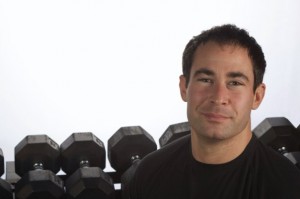
NT: I’m always grateful that I get to write articles for major fitness magazines. But, to have a major magazine do an article about me… man is that a huge professional honor! Especially in MuscleMag, which has been of one my favorite magazines since being teenager who was into lifting and trying to “get swole” 🙂
The article feature came about because I’ve been writing articles for several of the RKP magazines: Oxygen, Maximum Fitness, REPS! and MuscleMag. The editors of MuscleMag know me as a guy who’s always full of scientifically-inspired and athlete-approved ways to upgrade classic bodybuilding exercises. And, they are always interested in providing their readers with new ways to improve their workouts and bring about new muscle. So, when they decided they were going to start doing features of trainers, they contacted me to be the first. I’m so humbled that I was the very first name they thought of for this project.
MuscleMag filmed and photographed an extended training session I did with my friend and bodybuilder Fello Cambronero, who just won the OVERALL at the Sr. y Sra. musculo competition in Costa Rica. When it was all said and done, the editors liked the content so much they turned it into a BIG 7-page feature. I shared the excitment with Fello (Alex) Cambronero when the article was published because it was his first ever appreacnce in a major bodybuilding mag as a featured model. High five goes out to Alex and his lovely wife Maggy!
BJS: What’s your approach when working with bodybuilders? Specifically, do you use a mix of machines and free weights or do you prefer one versus the other. What about rep ranges?
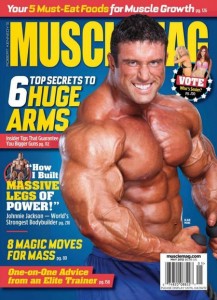
NT: My approach with bodybuilders is to increase Hypertrophy, DUH! 🙂 That said, I still take a hybrid training approach with them. In that I incorporate mobility work, some 3D movements and even some athletic type drills into thier warm ups.
I absolutely use BOTH free weight and machines as they both have unique benefits the other doesn’t. Machines are actually a very consistent component in almost ALL of the bodybuilding workout programs I design because they allow for a constant tension on the muscles being worked, due to the Cam design of a machine. You don’t get that with free weights because they’re purely gravity dependant.
Just think about a Biceps curl with dumbbells; you get no resistance at the bottom (when your elbow is straight), and you don’t get much resistance at the top of the curl either because the lever arm is very short. Is that a bad thing?, NO! But, when doing biceps curls on machine, we can hit those angles gravity (i.e. free weights) wouldn’t allow.
This is why I don’t get caught up in these typical arguments over which is better, free weights or machines? We just do both because they both have benefits. And, we’ve found using them together get us results even faster because our workouts are more comprehensive.
For sets and reps: We use a variety of schemes. We’ll do basic 3-4 sets of 8-15 reps. We’ll do 4-6 sets of 4-6 reps. We love to alternate between those two basic rep schemes.
We’ll also use a wide variety of traditional and not so traditional overload concepts, such as: rest pauses, drop-sets, 21’s, 1.5 reps, etc. Along with many Performance U Hybrid Strength Training innovations such as 747s, Complexes, Triple Threat Protocols, 54321 workouts, etc.
BJS: Do you periodize bodybuilding routines or is it more intuitive?
NT: I always have some sort of plan. But, my “plans” are a moving target in that I’ll change something up a bit if needed.
One of my favorite, go-to bodybuilding program design strategies is to design a 6-week block program. In that 6-weeks your first (primary) exercise is alternated between two moves. The rest of the exercise in that workout stay the same for six weeks. But, the reps are undulated each workout. So, you have higher reps days, lower reps days, etc.
In short; We alternate and undulate! That’s my little saying, so I’ll know if anyone steals it 🙂
BJS: I know you have a new DVD on single leg training that was just released. What are the benefits of performing single limb exercise for the lower body?
![]()
NT: First, I’d like to say that just because I came out with a Single Leg Training DVD doesn’t mean I’m against double leg training. At Performance U, we use BOTH bilateral and unilateral lower-body training. This another situation where we don’t bother wasting our time arguing which is better because they both work!
When coaches and trainers stop being so concerned with being right over thier peers in these debates, and become more concerned with finding what right for thier clients in thier training, we’ll all be better off.
Anyway talk to most trainers about single leg training and they’ll likely show you pistol squats, single leg RDLs and Bulgarian split squats. Or, a small variations of those same basic movements. Those are great exercises, but they don’t even scratch the surface of what we’ve been able to do with our hybrid single leg training concepts and techniques. In other words, pistol squats, single leg RDLs and Bulgarian split squats are the checkers. But if you’re ready to play chess, get the Secrets of Single Leg DVD.
There are several benefits of single leg training that we’ve found:
Better balance: This one is obvious
Less Chance of Sports Injury – We hear lots about asymmetries and injury potential. But, the research I’ve seen says injury potential is more about strength asymmetries than anything else. In that, when you don’t control one side of your body as well as they other, you may be at a higher injury risk. Research shows us that you can still move a bit differently on each side (i.e. have a movement asymmetry), just as long as you can control the movement you can create on either side.
Better Body Control and Strength – By following the SAID principle (i.e. Specific Adaptations to Imposed Demands), if you want to make sure you’re strong and able to control each side of your body, you train each side of your body independently to ensure BOTH side can do what they need to.
Improved Muscle Symmetry – Not only will have better strength/control on both sides potentially help you minimize injury. It can help you look better and build a more symmetrical looking lower-body.
Improved Sports Performance – Sports require stops, starts, direction changes and raising and lowering your center of mass. And, most of the time these action are done from a split, unilateral type stance where one leg is positioned to do more work than the other. We’ve found Single leg training can help ensure that both legs can get the job done, regardless of the position you’re in!
Less risk of hurting yourself in the gym – A high percentage of humans have a leg length asymmetry, which would make double leg training more risky because your body is having to deal with torque (from the leg length issue) along with the compression from the load you’re lifting when squatting or deadlifting. Single leg work allows us to not worry as much about this issue potentially hurting our clients and athletes. Plus, it gives us more capacity to use heavy double leg training when we feel it appropriate.
BJS: If you could pick one single leg exercise that provides maximal benefits for muscle development, what would it be?
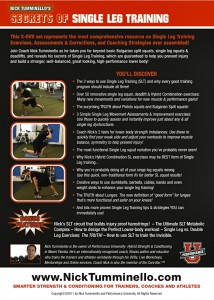
NT: When speaking purely about muscle development (for bodybuilding) purposes, I’d say the knee tap squat. It’s basically a single leg version of a front squat, with a bit more hip hinge to bring in more glutes and hams. It’s the exercise pictured in the middle images of the back of the DVD cover (see the image to the left).
BJS: You state that the pistol squat might not be a good exercise. Why?
NT: Here’s what I wrote for Laree Draper about this, which she posted here;
Although the pistol squat is a trendy, cool looking and old-time exercise, it’s not something we use with our clients and athletes at Performance U.
We don’t feel the pistol squat exercise is “bad”, nor do we feel it’s dangerous. And, we don’t get caught up arguing against Pistols, or will we try to convince anyone to stop doing them. All we can do is share the training methodologies that make the most sense to us, along with the exercise applications we’ve found to work best for us.
That said, in our training with individuals of all levels from pro athletes to active seniors, we haven’t found the body positions and force production patterns involved in the pistol squat exercise to have as much value and functional carryover as some of the other creative, hybrid single leg squat variations we use, which I’ve displayed in the Secrets of Single Leg Training 2-DVD set.
You can see more about why we don’t use the pistol squat in this video
embedded by Embedded Video
Sure the pistol squat can make you stronger! It’s also very challenging exercise. And, if you enjoy doing them, then great! But, we’ve found other single leg squat training options, which we’ve found to be more beneficial because they more accurately match the body postures we see in sports and daily living; and they more closely replicate the force production patterns we are looking to improve with the clients and athlete we train.
BJS: Many thanks for sharing your thoughts Nick!
You can check out Nick’s Blog at: NickTumminello.com
Here’s the link to check out Nick’s Secrets of Single Training DVD
April 22, 2012
Interview with Bestselling Fitness Author Lou Schuler
In my continuing efforts to expose the readers of my blog to top people in the fitness field, here is an interview I did with bestselling fitness author and award-winning journalist, Lou Schuler. Lou is someone I respect both professionally and personally, and he’s one of the few people around writing high quality consumer-oriented fitness books. He’s well-read on exercise and fitness, and conveys practical information in a very engaging manner. I’m sure you’ll get that sense from reading his responses to my questions. Enjoy!
BJS: You started out as a newspaper journalist. How did you get into writing about fitness?

Lou Schuler: It goes back to 1989. I had just gotten a job for a brand-new daily paper, the St. Louis Sun. I was a feature writer, so I wrote a lot about lifestyle trends. Health clubs were pretty common by then, and lots of people were at least interested in working out, even if relatively few people actually did.
I was 32, and I’d been working out since I was 13. I had no idea what I was doing most of that time, but it was something I’d done for so long that it was a big part of my identity.
The newspaper business, traditionally, has not been conducive to healthy lifestyles. Even in 1989 it was still pretty unusual for a writer to not smoke, not drink very much, and spend a big chunk of his free time working out.
So whenever we needed a story that was related to health or fitness, I got the assignment. Honestly, I didn’t consider those stories any more important than anything else I wrote about – dating, nightlife, entertainment, whatever.
The Sun went out of business in 1990, and in the fall of 1991 I started grad school for creative writing at USC. I was just terrifyingly broke. I was paying my rent with a credit card. I thought I’d be able to get a job waiting tables or tending bar while I got my master’s degree, but there was a recession in L.A., and even the places that were hiring didn’t want to work around my class schedule.
Sometime that fall I answered a blind ad in the L.A. Times for an editor at a fitness magazine. It turned out to be Men’s Fitness, which I’d never heard of. I used my clips from the Sun as writing samples, and that’s what got me in the door for an interview. I didn’t get the job that was advertised, but I got some freelance assignments, and then a part-time copyediting job at Muscle & Fitness, and finally a full-time job at Men’s Fitness in early 1992.
I was promoted to fitness editor three years later, and then I moved across the country to work for Men’s Health in 1998.
BJS: You were a top editor at popular magazines such as “Men’s Fitness” and “Men’s Health” for many years. Any reflections on that experience? Do you miss it?

Lou Schuler: I don’t miss being in an office. I was involved in way too many things, and I think it was clear I needed to get out on my own and focus on the things I do best.
The one part I do miss is feeling that I’m on top of everything – that I’m reading all the latest studies, that I’m going to the right conferences, that I’m identifying the coaches and trainers with interesting new ideas and finding ways to get them into the mix.
Fortunately, I’ve been able to get back to that, in a limited way, in the past couple of years, writing and editing articles for Men’s Health.
Writing for magazines is limited by space and format, and you can’t really appreciate how challenging it is until you work on both ends – writing and editing.
The good thing about magazines is the way you’re forced to zero in on what’s immediately useful to a reader. The tough part is knowing the reader would get more benefit with more information. You have to make a lot of judgment calls.
That’s also true of books, by the way, where you have hundreds of pages to work with. You still have to choose what you think will help readers most, and cut out the rest.
BJS: You are super knowledgeable about exercise and nutrition. How do you stay on top of current research?
Lou Schuler: Brad, you’re being way too kind! I think a better way to phrase the question is, “You aren’t a complete idiot when it comes to exercise and nutrition. How do you maintain your non-stupidity?”
I get the best information and insight at conferences. If it’s just me reading journals, keeping up with blogs like yours, and following along with the New York Times and the other daily media, I get an overview of some things that some people have decided are important.
But when I go to a conference, I get to hear what researchers talk about when they sit down with other researchers. They’re looking at their own field in a way that’s fundamentally different from the way outsiders report on their field.
Here’s a very specific example: I attended the NSCA sport-specific conference in 2003 in New Orleans. It was the first time I’d heard Mark Verstegen present. His topic was rotational training, and almost every exercise he showed in the presentation was new to me. My first thought was, “We have to get this stuff in the magazine.” I introduced myself to him after his talk, then ran up to my hotel room and emailed a couple of editors at MH. I said we have to work with this guy.
The upshot, interestingly enough, wasn’t a magazine feature. It was the Core Performance book that Mark wrote with Pete Williams. When the proposal came in from Mark’s agent, a couple of us pushed hard to get the deal for Rodale (the company that owns Men’s Health). I ended up editing the book. It worked out great for everyone.
That’s not a story about research so much as identifying someone who had fresh, exciting ideas, and coming away from the conference knowing I’d seen something new that I just had to share with readers.
BJS: Your “New Rules…” series has been wildly successful. What motivated you to write the first book in the series, “New Rules of Lifting for Men”?
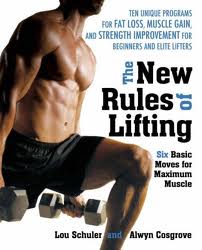
Lou Schuler: That’s a fun story. The original title of the book was Basic Training. I’d spent my career as a fitness editor searching out new ideas that, ultimately, made lifting more complicated. So Alwyn Cosgrove and I talked about how simple we could make it. Could we narrow down all exercises to a handful of movement categories?
The goal was to get lifters away from the idea of “body parts” and get them to focus on the big picture – the exercises that use the most muscle in ways that come closest to basic human movements. People like Paul Chek had been talking about this idea, and Alwyn was already using it to train his clients. But it was new to me, and I thought readers would respond to it.
As it turned out, there was another workout book with that same title. It was going to come out before ours. We needed a new title, and everyone liked New Rules of Lifting.
Now, it’s interesting that you refer to it as “New Rules of Lifting for Men.” Obviously, it was written for men, because that’s the audience I’d always written for. But as soon as it came out in January 2006, I got questions from women asking why I’d excluded them.
There aren’t many things that catch me completely by surprise, but that was one of them.
BJS: You followed that first book up with “New Rules of Lifting for Women.” In what ways do you feel that women need to train differently than men?
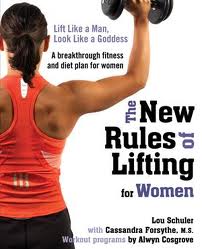
Lou Schuler: I’d read a couple of textbooks to get my training certifications, I’d gone to conferences for years, and I’d been in weight rooms where elite male and female athletes were training. Nothing I’d read or seen suggested that women should train differently for the same goals. Certainly Alwyn and Rachel Cosgrove don’t train women differently from men at Results Fitness.
I just thought women wanted to train differently. You know, purely a cultural thing.
But when I started getting all these questions, from readers as well as the media, I thought, well, why not write a book for women who want to train like men?
The original title was Lift Like a Man, Look Like a Goddess. People either loved it or hated it.
After the book was finished, edited, and photographed, the sales staff at Penguin petitioned our editor to change the title. They said, “We’ve done okay with New Rules of Lifting. Why create a completely new branding for this book, when we could make it part of a franchise that’s already off to a pretty good start?”
So I went back and, again to my surprise, it took hardly any rewriting and restructuring to put it into the New Rules format. A lot of the rules were already there in chapter titles and subheads. It was just a matter of moving type around. So I’d written it as a New Rules book without meaning to.
Changing the title was a great call all around. NROL for Women came out in 2008, and it’s the most popular book in the series so far. It wouldn’t have had nearly the same impact with the original title.
BJS: You just released the fourth book in the series, “New Rules of Lifting for Life.” Who is the target audience and how does this one differ from previous books?

Lou Schuler: As with NROL for Women, this book is entirely demand-driven. I’ve always resisted the idea that men and women in middle age needed a book of our own. Readers convinced me otherwise.
Readers kept asking how to modify programs for age. I kept saying, no, you don’t have to change anything. You just have to be smarter. Be more careful. Take more time to recover if you need it. But don’t change the program just because you’re 45 and you think it’s written for someone who’s 25.
There was another type of question that came from people who were extremely overweight, or who were rehabbing an injury, or who had some kind of illness that changed what they could do in the weight room. I don’t give medical advice, but I always tried to help those readers however I could.
Then I had a light-bulb moment: All these readers were asking the exact same question: How do I train when I’m not like all the other people in the gym?
The solution was relatively simple once I’d identified the problem, and it was right in front of us the whole time.
When Alwyn and Rachel and their staff train clients, they work from a template. The workout is presented as a series of movement patterns – which of course is the basis of all our books – along with parameters for sets and reps. They select exercises based on what works best for the individual client in that part of the program.
So if someone has knee issues, but no upper-body problems, that client might be restricted to extremely basic exercises in the squat and lunge movement patterns, while doing more advanced upper-body pushes and pulls.
This is exciting for us on two levels. First, we allow readers to decide for themselves what they’re able and ready to do. Second, it comes closer to the way Alwyn actually trains clients.
A book can never replicate that experience directly – a good trainer is always going to see problems we don’t see in ourselves, and make adjustments that wouldn’t occur to us. But it comes just a bit closer.
BJS: What is the single most important piece of advice you can give someone who wants to attain a fit body?
Lou Schuler: You have to work hard, and you have to work consistently. That means you have to find something you enjoy enough, and that you find interesting enough, to keep you going back to it. It also has to be something that lends itself to steady improvement over time.
It has to engage your mind in a way that allows it to be fully separate from the rest of your life, but not disrupt your life. In other words, when you’re doing it, you forget about work. But when you’re finished with it, you can get right back into the flow of your job or your family or World of Warcraft or whatever.
For me, and for you, and for most of the people reading this, strength training meets those criteria. It’s a perfect hour-long break in the middle of my workday. For someone else, it might be a perfect start to a day, or a perfect finish.
We both know that trends change over the years, and sometimes research points us in new directions. But what never changes is the importance of effort. Get the work done and you’ll be pleased with the results.
BJS: Great stuff, Lou. Many thanks for sharing your thoughts and ideas with my readers!
For further info, check out Lou’s blog at: LouSchuler.com
Check out Lou’s new book at: The New Rules of Lifting for Life
April 17, 2012
Reflections from the NSCA Personal Trainer Conference 2012
The 2012 NSCA Personal Trainer Conference was held in Las Vegas at the beautiful M Resort (and it really is a magnificent hotel!). I had the pleasure of speaking there–my seventh time presenting at the event– and, everything considered, this was the best of them all. My topic was “Facts and Fallacies of Fitness.” It’s a subject that I’ve spoken on before, but the topics I covered were all new. I had good-sized crowds for both lectures (at the PT conference, you present the same lecture twice–once in the morning and once in the evening) and the response was excellent. NSCA trainers are at the top of the food chain, so it’s always great presenting to a knowledgeable, inspired audience.
What made the conference so special, though, was both the quality of the other presenters and getting to hang out and chat fitness with many of them. In particular, I spent a lot of time with my two good friends, uber trainer Bret Contreras and uber nutritionist Alan Aragon. Both of these guys are super smart and super humble. What’s more, they’re as passionate about fitness as me, and that’s really saying something! Most memorable was going to dinner (the M resort has an awesome buffet!) with the two of them and spending 3+ hours discussing and debating aspects of exercise and nutrition. We got so wrapped up in discussion that at 10:30 pm, the waiter told us the restaurant had closed–an hour-and-a-half ago! Below is a pic from that epic evening. That’s me on the left, Bret in the middle, and Alan on the right.
There were so many excellent presenters that it was impossible to see every session I would have liked (the presentations are structured so that four speakers are presenting at any given time slot). Here is a rundown of the sessions I did get a chance to see:
Alan Aragon: Alan presented on nutrient timing. This guy is the real deal! I’ve known Alan for quite a while now and no one–I mean *no one*–has a better grasp of nutritional research and its application to real life situations. Ask Alan a question on a nutrition topic and he’ll rattle off answer supported by research with the name of the author and year of the study faster than you can bat an eyelash. In his presentation, Alan discussed various misconceptions about nutrient timing and also touched on the issue of meal frequency. Bottom line from Alan’s perspective is that the importance of nutrient timing exists on a continuum. If you are a recreational athlete or someone who simply wants to add a little muscle, the importance of timing will be negligible; if you are a bodybuilder or strength athlete, there will be added importance; and if you are an athlete that needs to compete multiple times in the same day, the strategy is crucial.
Brent Alvar: Dr. Alvar presented on the dose-response relationship of exercise. Doc just happens to be the chair of my doctoral dissertation committee and one of the most knowledgeable guys in the field on strength training adaptations. His presentation focused on the importance of higher volumes of training in promoting increases in strength and hypertrophy–the single set approach, which certainly can produce gains, simply is not sufficient if maximal results are desired. Dr. Alvar also delved into the importance of periodization, stating that different periodization models can be appropriate depending on the goals and abilities of the individual. He advocated a non-linear (i.e. undulating) approach for those who need a combination of strength and muscular endurance (i.e. military personnel, firefighters, etc) whereby you perform a three-day-a-week routine, lifting heavy on Monday, moderate on the Weds, and light on Friday.
Morey Kolber: Morey is not only a close friend, but he also is one of the world’s leading researchers on shoulder joint injury and rehabilitation. Morey discssed an evidence-based approach to working with clients who have had shoulder injuries in a post-rehab environment. He discussed the importance of avoiding exercises such as behind-the-neck presses and behind-the-neck lat pulldowns in this population due to the increased stresses on the joint. He also showed video demonstrations of various stretches that can be performed to improve functional results. Terrific, practical info!
Marie Spano: Marie is a super-knowledgeable Registered Dietician who isn’t afraid to refute typical American Dietic Association dogma. Her presentation focused on the importance of total caloric intake in weight control. She used practical info to make her points, including overviewing the Twinkie Diet that helped nutrition professor Mark Haub lost 27 pounds in just ten weeks eating pretty much nothing but junk food–just to prove that the first law of thermodynamics applies to weight loss. Proof positive! She also discussed application of different nutritional strategies to optimize results, stating that a low-carb approach can work well for those who are insulin resistant.
Len Kravitz: No, this isn’t the singer/guitarist. Rather, Dr. Len Kravitz is perhaps the most dynamic fitness presenter I’ve seen. The guy is such a total pro and his Powerpoint slides are amazing. I study his techniques and try to adopt many of his attributes into my own style. If I’ve grown as a speaker over the past few years, I have Dr. Kravitz to thank. Here, he presented on high-intensity interval training (HIIT). In case you don’t know, HIIT involves alternating between high-intensity cardio intervals and low-intensity cardio intervals. As usual, Dr. Kravitz had tons of video examples of different HIIT strategies and how they can be applied based on the needs of the individual. Most interesting was his chart at the end of the presentation where he compared HIIT to traditional ‘steady-state’ cardio. He noted that all things considered, HIIT has the edge when you consider the totality of the adaptations promoted by each respective approach. Bottom line: If you can do HIIT, it’s probably going to be the most beneficial way to achieve cardiovascular benefits.
Again, this was just an awesome conference. Great people, great presentations, great times. My only regret was that I didn’t have more time to see some of the other terrific presentations. Next up: The NSCA National Conference this July in Providence, Rhode Island. I’ll be presenting a pre-con on training for maximal muscle growth as well as a main session on metabolic resistance training. Can’t wait!
Stay Fit!
Brad
April 8, 2012
News and Notes
It’s been a busy past few weeks! With everything that’s been going on, I haven’t had much time to breathe, nevertheless post. Sooooo….in the meantime, I wanted to get everyone up do date with what’s been doing:
First off, I’m finishing up the semester for my PhD with a sea of papers and tests currently due. Thankfully, I’m just about half way through my doctoral coursework. Yes it’s been *a lot* of work so far, but overall a very rewarding experience. Beginning to see the light at the end of the tunnel! I’m in the process of finalizing my dissertation research and very much looking forward to furthering our understanding of the mechanisms of muscle hypertrophy and how we can best train to optimize muscular development. I’ll be posting info about my findings as they become available. Stay tuned…
I lectured at the ACSM Fitness Summit last week in Las Vegas. My main session was a seminar on “Is Functional Training Really Functional?” The seminar challenged many of the commonly held beliefs on what constitutes ‘functional fitness.’ Bottom line is that we need to get away from the polarizing belief that exercises are either ‘functional’ or ‘non-functional’. In fact, all training can be functional. Functional transfer exists on a continuum (I’ve dubbed this the ‘Functional Fitness Continuum’) and its application to program design ultimately depends on the needs, abilities, and goals of the individual. In addition to this session, I also participated in an expert panel about high-performance conditioning. The panel was moderated by Dr. Len Kravitz, and I served as the expert on muscle hypertrophy (i.e. growth). This was a really fun experience. The turnout was great (I was told over 500 were in attendance), and there were some very thought-provoking questions from the audience. I’m looking forward to speaking at the event again in the future.
After ACSM, I flew to NSCA headquarters in Colorado Springs to finalize initiation of the Certified Special Populations Specialist (CSPS) exam. This was the culmination of over a year of work that went into developing the exam, which was spearheaded by my friend and colleague Chat (Chopper) Williams. In short, the CSPS is designed to distinguish those trainers who have the competency to work with a wide array of special populations, including those with musculoskeletal disorders, cardiopulmonary disease, and pretty much any other condition that requires knowledge beyond that needed to work with healthy populations. The first exam will be held at the NSCA National Conference in July. For those interested, here is a link to info about the certification.
This coming Saturday I will be lecturing at the NSCA Personal Trainer Conference at the M Resort in Las Vegas on one of my favorite topics: Facts and Fallacies of Fitness. The lecture will debunk many of the common fitness myths and misconceptions that abound in the exercise field. This is my sixth time speaking at the event, and the NSCA always puts on a first-class conference. Lots of other great speakers, too. Hopefully you can attend. Here is a link to the schedule of presentations.
Finally, my good friends, uber trainer Nick Tumminello and uber journalist Lou Schuler, have teamed up to write an excellent primer on creatine. In case you don’t know, creatine is one of the only supplements that has been found to have any efficacy for building muscle and increasing strength. Yet a great deal of controversy and uncertainty exists about the supplement. Nick and Lou have done an outstanding job cutting through the hype and providing the no-nonsense facts about pretty much everything you need to know on the topic. It’s a must read for those interested taking or considering taking creatine. And best of all, its free! Here is a link where you can download a copy of the report.
Stay Fit!
Brad





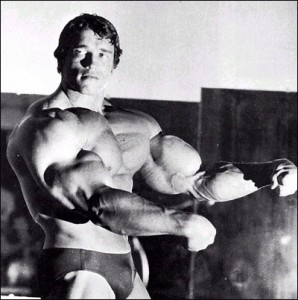
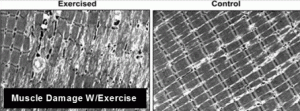
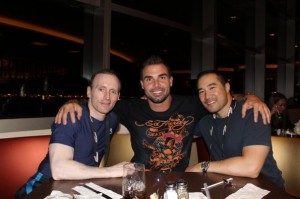

 Entries (RSS)
Entries (RSS)



